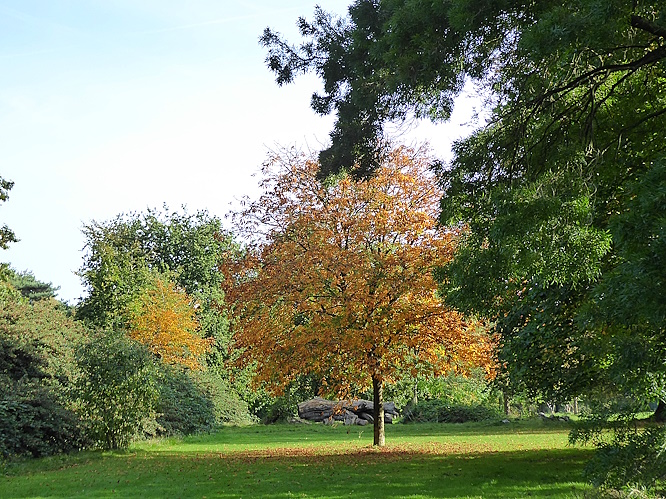
On a dry, sunny and unseasonably warm day we visited Calderstones Park, arriving at the Menlove Avenue side. For a change, we wandered to the right, through the shrubbery to the open southern field. There were at least half a dozen Ring-necked Parakeets squawking overhead and some lovely toadstools below, probably the Parasol Mushroom, Macrolepiota procera.
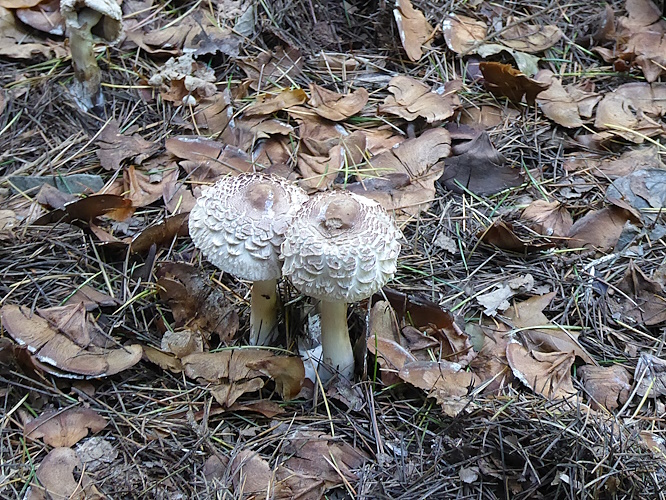
We stopped to look at three dead trees in the open field, which had quite upright shapes, all looking like they had been the same species. One was sprouting from the base, and the leaves were shiny green, arranged alternately, coarsely toothed and very uneven at the base. Definitely some kind of Elm. I think they were the rare Huntingdon Elm Ulmus vegeta. They may have been planted as an experiment to see if they were resistant to Dutch Elm disease. Clearly they aren’t. A very big one at Flaybrick died a few years ago, too, after hanging on longer than most Elms.
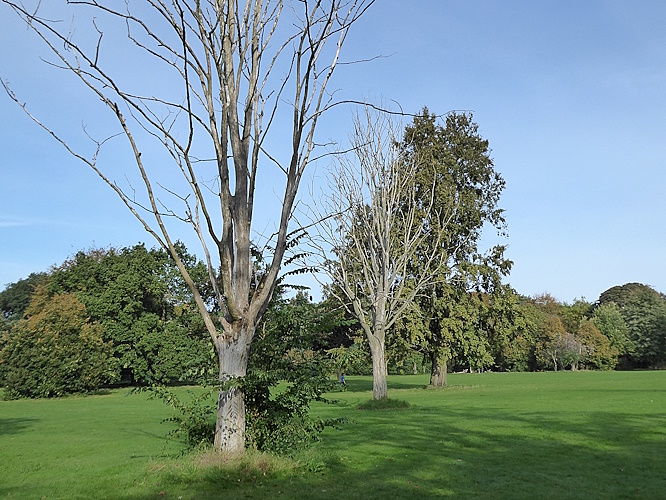
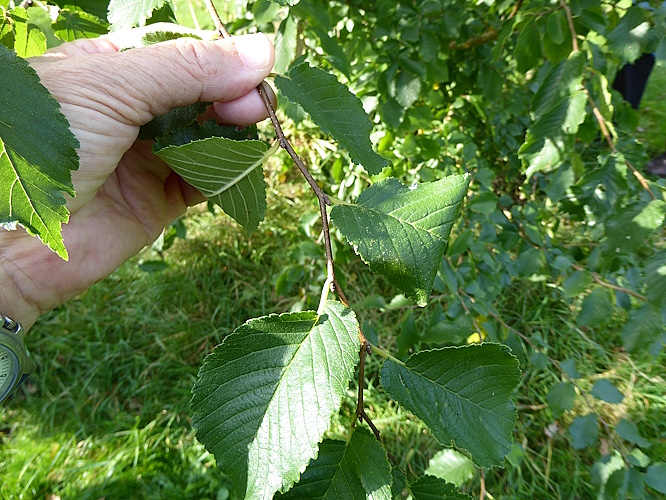
We spotted a Nuthatch on ground and two Goldcrests in a Red Horse Chestnut. A Red Admiral and a distant white butterfly went past. It’s very late for them to still be on the wing. One dead tree stump had another interesting fungus, but I have no idea what this one was.
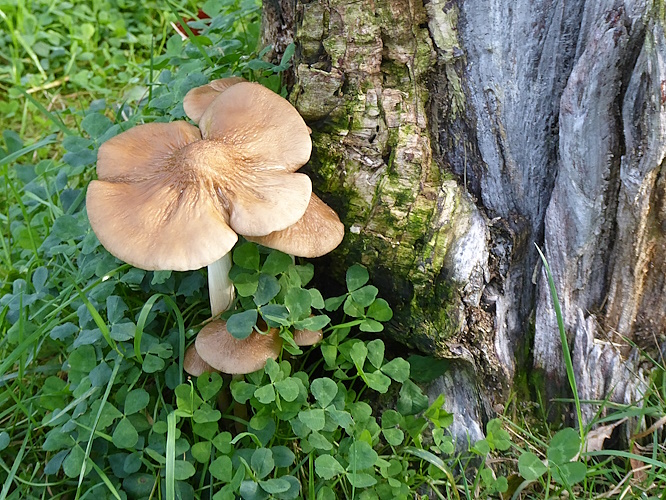
On the lake were Mallards, Canada Geese, Coots, Moorhen, and a Robin in the shrubbery.
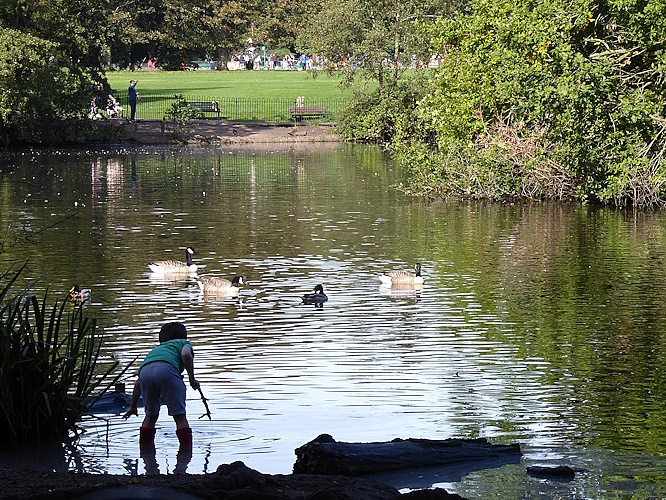
Next to the island, a Red-eared Terrapin was basking on a log, below a preening Moorhen.
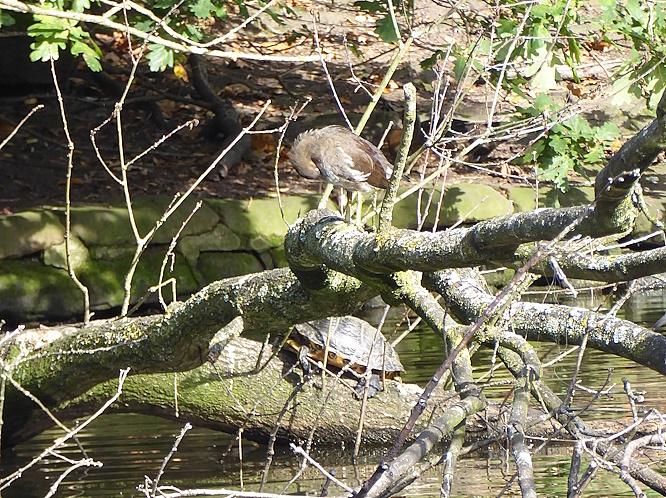
The magnificent avenue of American Limes (or Basswoods) passes here. There are over a hundred of them lining the main drive through the park, sweeping south east to north west. One of them is the County Champion of its species, but they are all so perfectly alike it’s almost impossible to pick out the tallest or fattest.
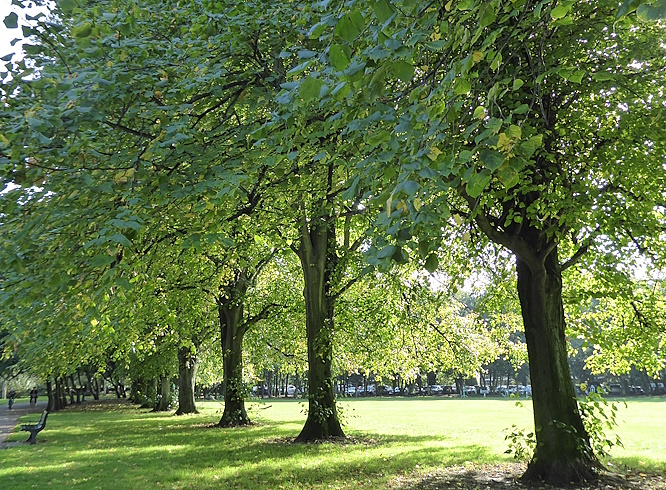
The autumn fruits are very abundant this year. The Sweet Chestnut trees are full, although not many of the nuts are of edible size. The Deodar Cedar had more baby cones than I have ever seen, and this golden-edged Holly was full of berries.
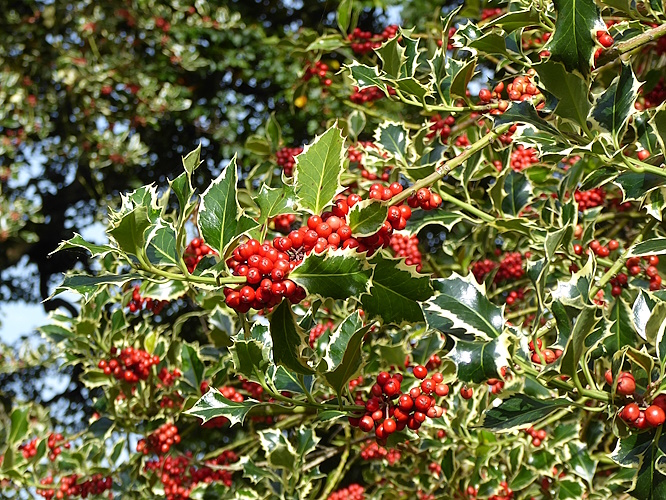
The Chinese Dogwood in the ornamental garden was also full of red fruits, and in the Japanese garden, the rather garish oddity, Harlequin Glorybower Clerodendrum trichotomum, was doing its weird thing.
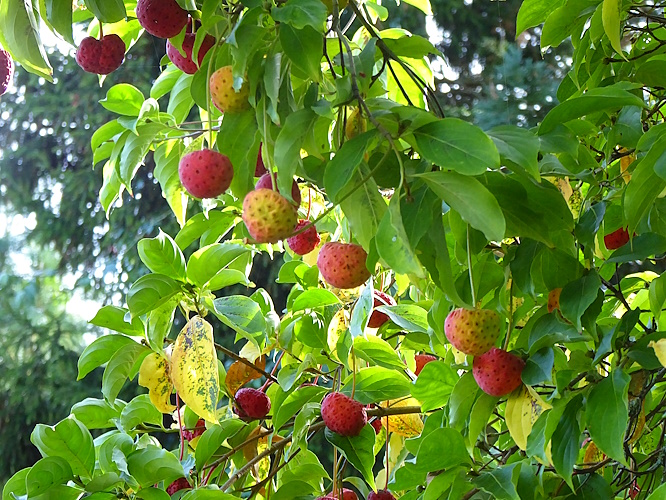
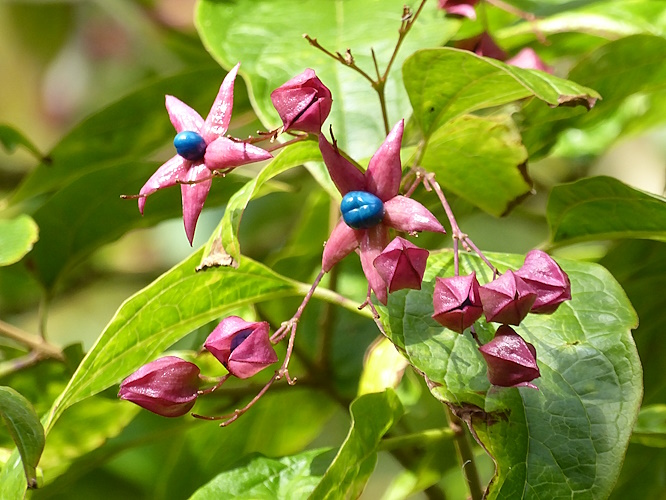
They have a couple of Mimosa or Silver Wattle trees, which bear copious yellow flowers as early as February. They are in bud now outside the Japanese garden.
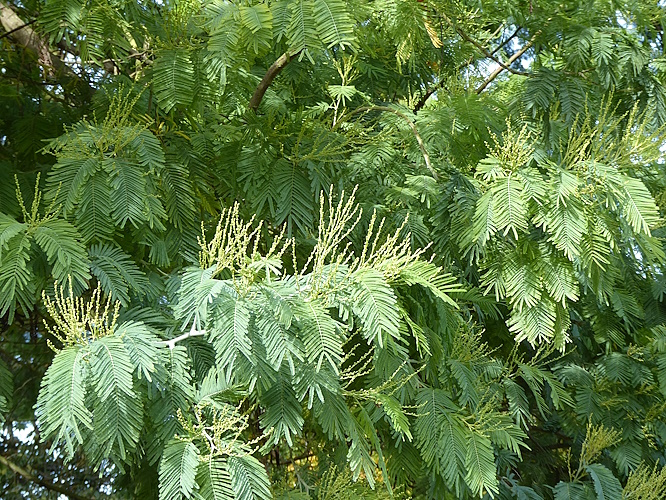
To celebrate autumn, there was a lovely display of sewn or knitted pumpkins on the mantelpiece in the Manor House.
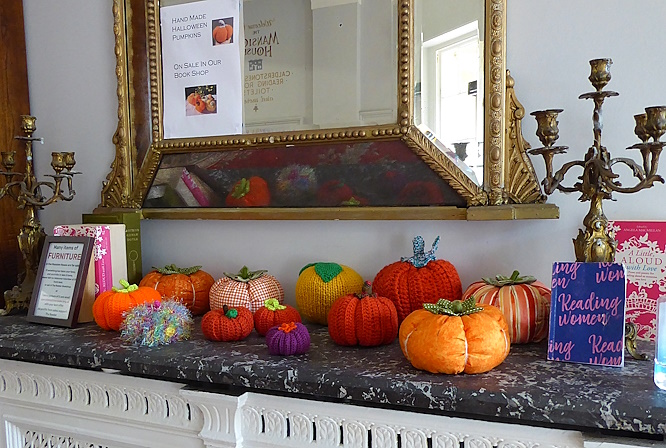
Public transport details: Bus 86A from Elliot Street at 10.10, arriving Mather Avenue / Ballantrae Road at 10.40. Returned on bus 86 from Menlove Avenue / Storrsdale Road at 2.08, arriving city centre 2.40.
